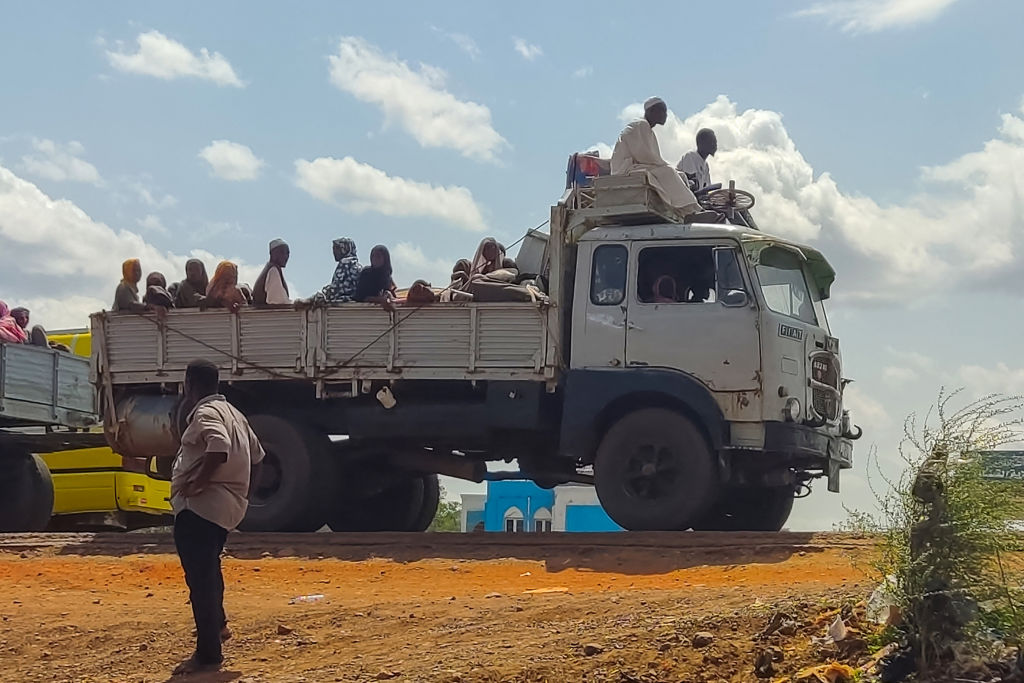ADF STAFF
Sudan’s Rapid Support Forces (RSF) have added Sennar state, a key agricultural region, to their zone of control as they sweep through the southern parts of the country with little resistance from the rival Sudanese Armed Forces (SAF).
At the end of June, RSF fighters in armed pickup trucks attacked Singa, the capital of Sennar, and took over the SAF’s 17th Infantry Division headquarters. Fighters also looted homes and shops and took over Singa’s primary hospital.
“They did like what they did in (the capital) Khartoum and other cities,” Abdel-Rahman al-Taj, a Singa resident who fled on July 6 to Blue Nile state, told Africa News. “Many people were killed, wounded or detained.”
Sennar state was the RSF’s first territorial gain since it conquered al-Gezira state just to the north in December 2023. That assault was similarly quick and also preceded a wave of looting, executions and assaults on the population, including forced recruitment to its militia.
“The fall of Sennar cannot be overstated,” analysts with the Armed Conflict Location & Event Data group wrote recently. “It borders four other states, in addition to sharing a border with South Sudan and Ethiopia and contributes significantly to Sudan’s agricultural production.”
In response, the SAF has begun arresting, detaining and deporting South Sudanese, Ethiopians and people from Darfur in western Sudan from regions the government controls, according to Sudan War Monitor.
The capture of Sennar gives the RSF new supply routes from South Sudan and a new route to attack Gedaref state to the northeast. It also isolates Blue Nile state in Sudan’s far southeast and cuts off the 4th Infantry Division in Damazin in Blue Nile state, the 10th Infantry Division in Abu Jubeiha in South Kordofan, and the 18th Infantry Division in Kosti in White Nile state from the SAF’s command center in Port Sudan, according to observers.
The RSF now controls more than half of Sudan’s territory. Like Sennar and al-Gezira, many of those states are vital to Sudan’s economy because they produce food, oil, gold or other key resources.
The RSF recently took control of El Fula, the capital of West Kordofan, and the strategic town of al-Meiram after the SAF withdrew from its bases following a brief clash with the RSF.
The RSF has also launched drones against SAF positions in government-controlled areas such as Northern state, where the SAF shot down three RSF drones over the airport in Merowe at the end of April. The RSF zone of control also threatens the financial resources of the SAF, which depends on its deep roots in Sudan’s economy to fuel its operations. The SAF controls Sudan’s Red Sea coast and its port infrastructure, which has provided it with leverage to receive aid from Russia and Iran.
The RSF is largely self-funded, thanks to leader Gen. Mohamed Hamdan “Hemedti” Dagalo’s control of a major gold mine from which he smuggles gold to markets in the United Arab Emirates. The assault on Sennar, however, pierces the heart of Sudan’s food production, raising questions about the future disasters that could result.
“The invasion of Sennar could disrupt exports to other parts of the country, deepening Sudan’s already severe grain shortage and raising the risk of famine,” analysts with Sudan War Monitor wrote recently. “Additionally, mass displacement and economic disruption adds to the humanitarian burden in other Sudanese cities and villages, which are now receiving tens [of] thousands of people fleeing from Sinja and other parts of Sennar.”

